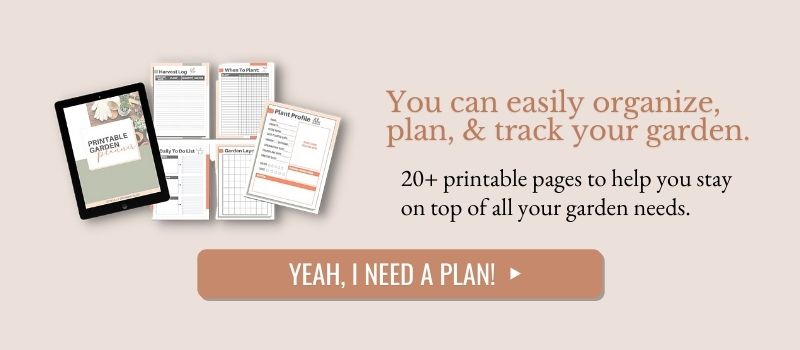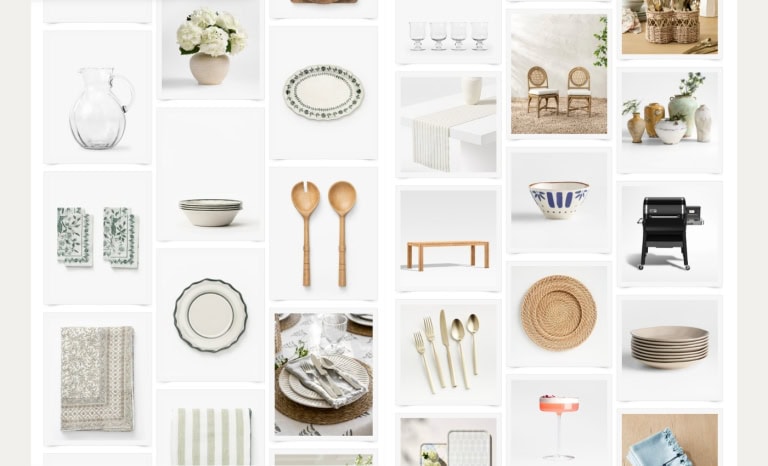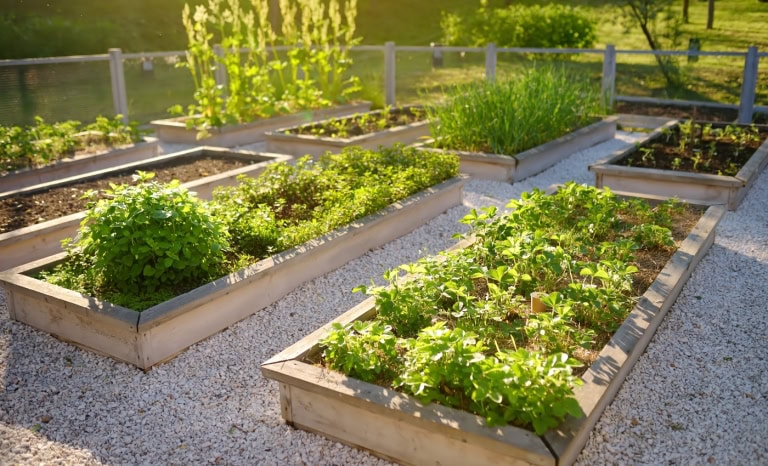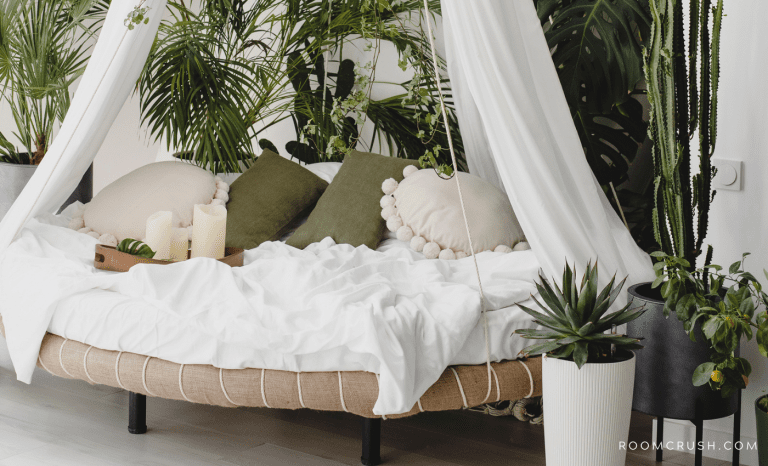How To Build Raised Garden Beds | Easy DIY Design

Follow this easy tutorial on how to build easy, affordable raised garden beds! This DIY is cheap and will last for years! The tutorial will give you some great ideas on the best raised garden bed designs and layout.

The Benefits Of Raised Garden Beds
Raised garden beds are a great way to create an organized garden space, especially when you have limited space for planting a garden.
Building raised garden beds yourself will save you money, and this DIY tutorial will show you exactly how.
This site uses ads and affiliate content as an Amazon associate earning on qualifying purchases. Disclosure.
Raised garden beds provide easy drainage, and help keep pests out. We’ve built both rectangular 4ft x 8ft raised garden beds and square 4ft x 4ft beds using a similar design, so pick whichever fits better in your space.
This tutorial will show you how to build raised garden beds that will last for years!
Ready to build your own raised garden beds? Keep reading this tutorial to learn how to make a simple, easy DIY garden bed – or if you prefer video content, checkout our YouTube tutorial below!
Short on time? Pin this post to reference later!
Click here to subscribe to our YouTube channel!
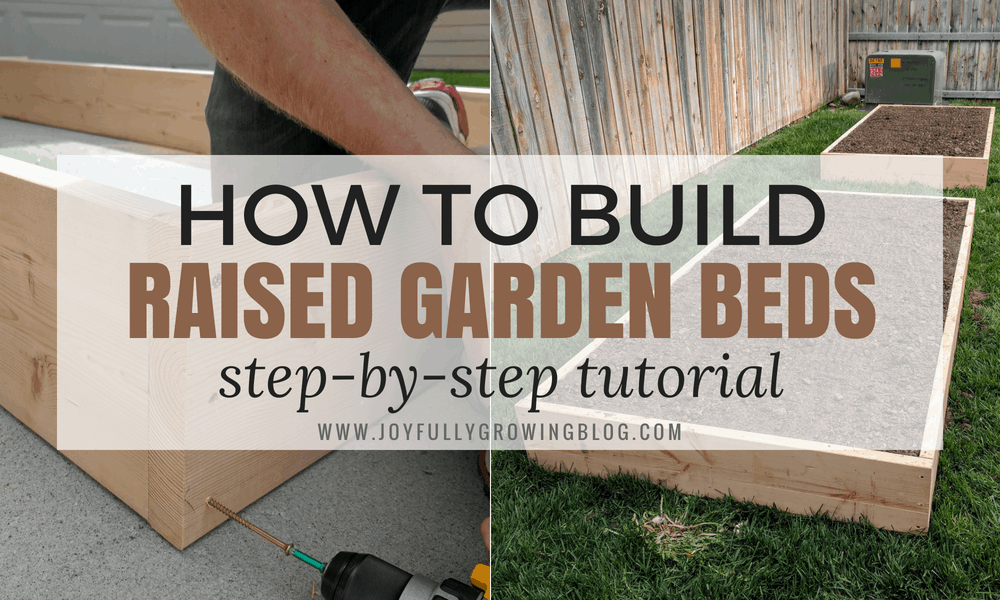
How To Build Raised Garden Beds For Cheap
Building Materials & Tools
- 2″ x 10″ Lumber
- Swanson Speed Square
- Carpenter’s Pencil
- Tape Measure
- Circular Saw
- Dewalt Cordless Drill
- 3.5″ Construction Screw
Tip: The Home Depot has great delivery options. Many of the items on their website include free 2 day delivery. They also offer same day delivery as an option! Check out their delivery options for lumber and other supplies. Availability and delivery fees may vary by region.
What kind of wood should you use for raised beds?
We chose to use untreated 2″ x 10″ construction lumber to build our raised garden beds. Untreated lumber is cheap, contains no unwanted chemicals, and will last a minimum of 5-10 years depending on the local climate.
You can expect untreated wood to hold up for 10+ years in dry climates, however, in wet areas it may need to be replaced in as little as 5 years.
Many people choose to build raised garden beds with pressure-treated lumber. While the treated lumber does last longer, it also costs almost double. In addition to the added expense, the chemicals used in the pressure-treating process can seep into the soil.
We love eating the homegrown vegetables grown from our garden, so we used untreated lumber to minimize any risk of contamination.
RELATED: How To Install Drip Irrigation In A Raised Garden Bed
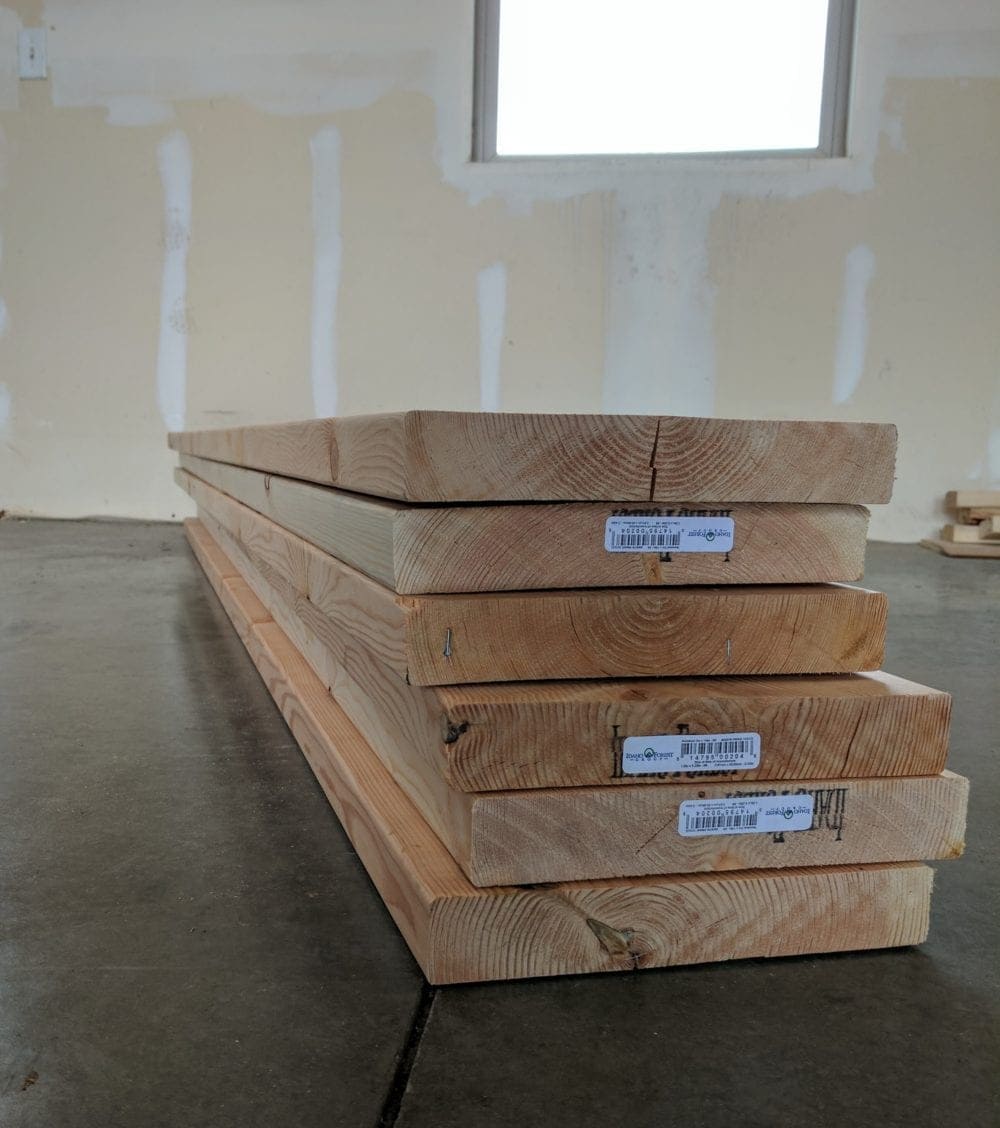
4’x8′ Raised Garden Bed Tutorial
Four feet by eight feet (4′ x 8′) is an easy size for raised garden beds because you can buy 8ft lumber, and it allows for minimal cutting. Then you’ll only need to make one cut to complete this project!
For our raised garden beds, we made the long sides of the beds 8ft long so we could use full-length, un-cut 2″ x 10″ x 8ft boards.
Then, to make the boards for the short sides of the frame, we just needed to cut a 4′ x 8′ board in half.
Tip: For a smaller bed size, making 4′ x 4′ square beds would be just as easy. Simply cut two boards in half and use all four boards to create a square frame.
Step 1: Measure & Mark
To get started, we used a Swanson Speed Square (Amazon) and pencil to mark the boards at 4ft.
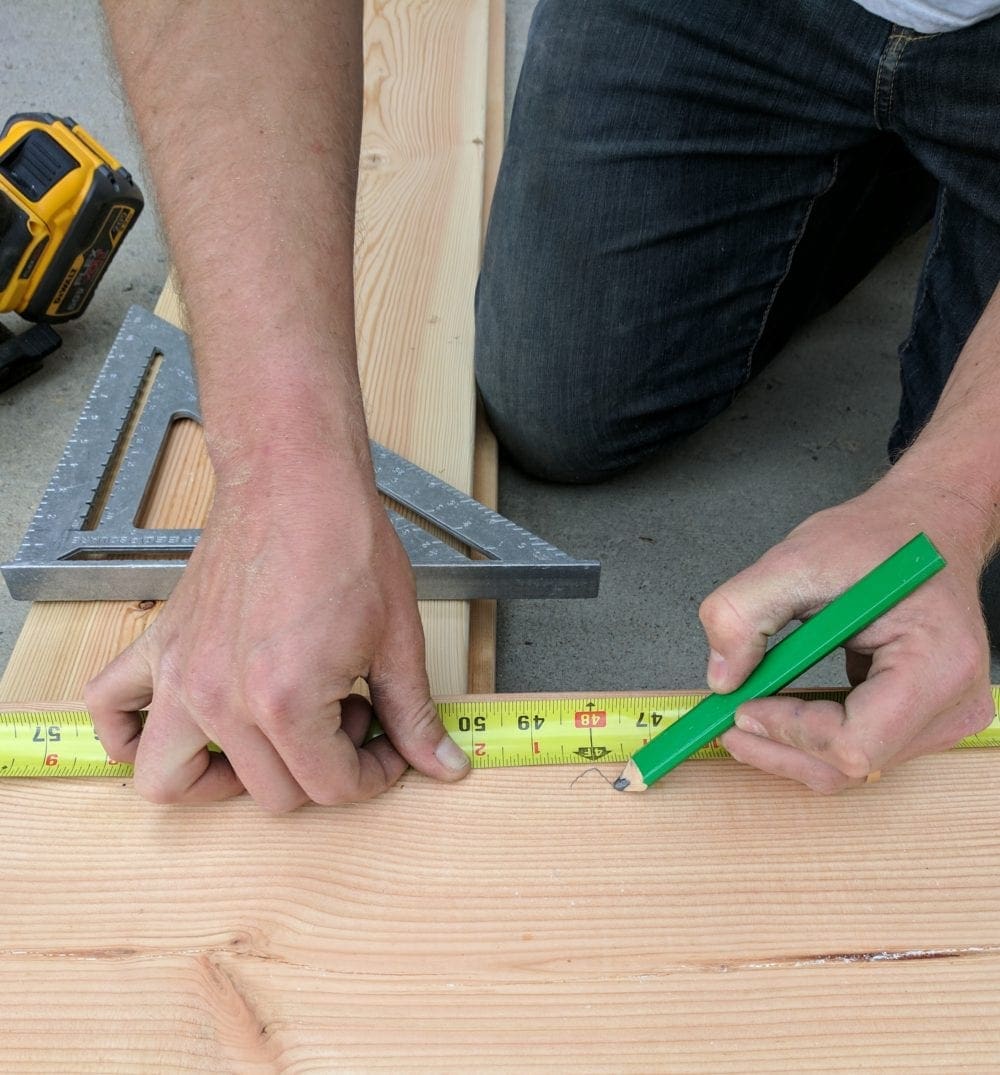
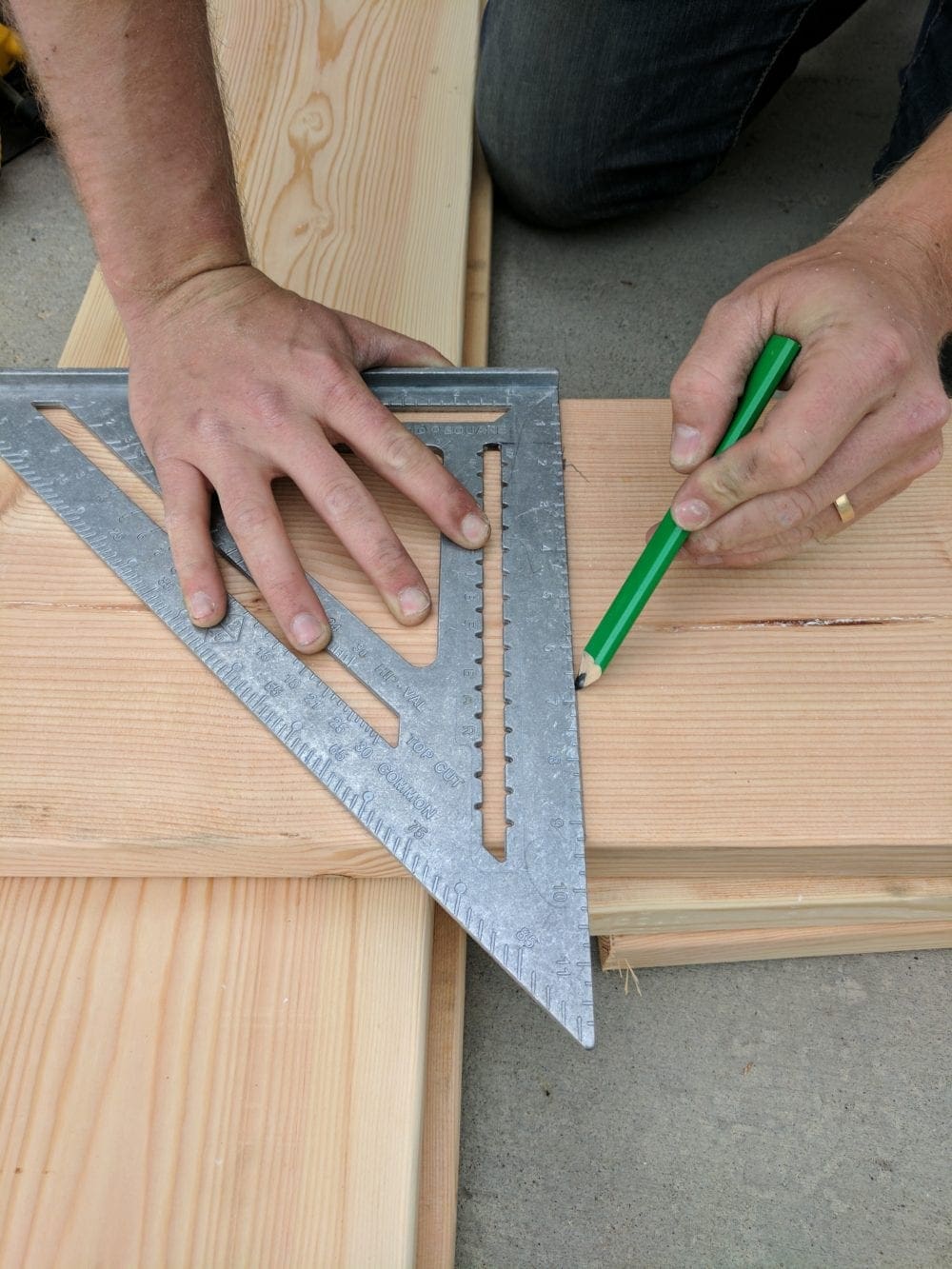
Step 2: Cut the Boards
Next, we cut the boards using our favorite Dewalt 60V Circular Saw but of course, any wood saw will work.
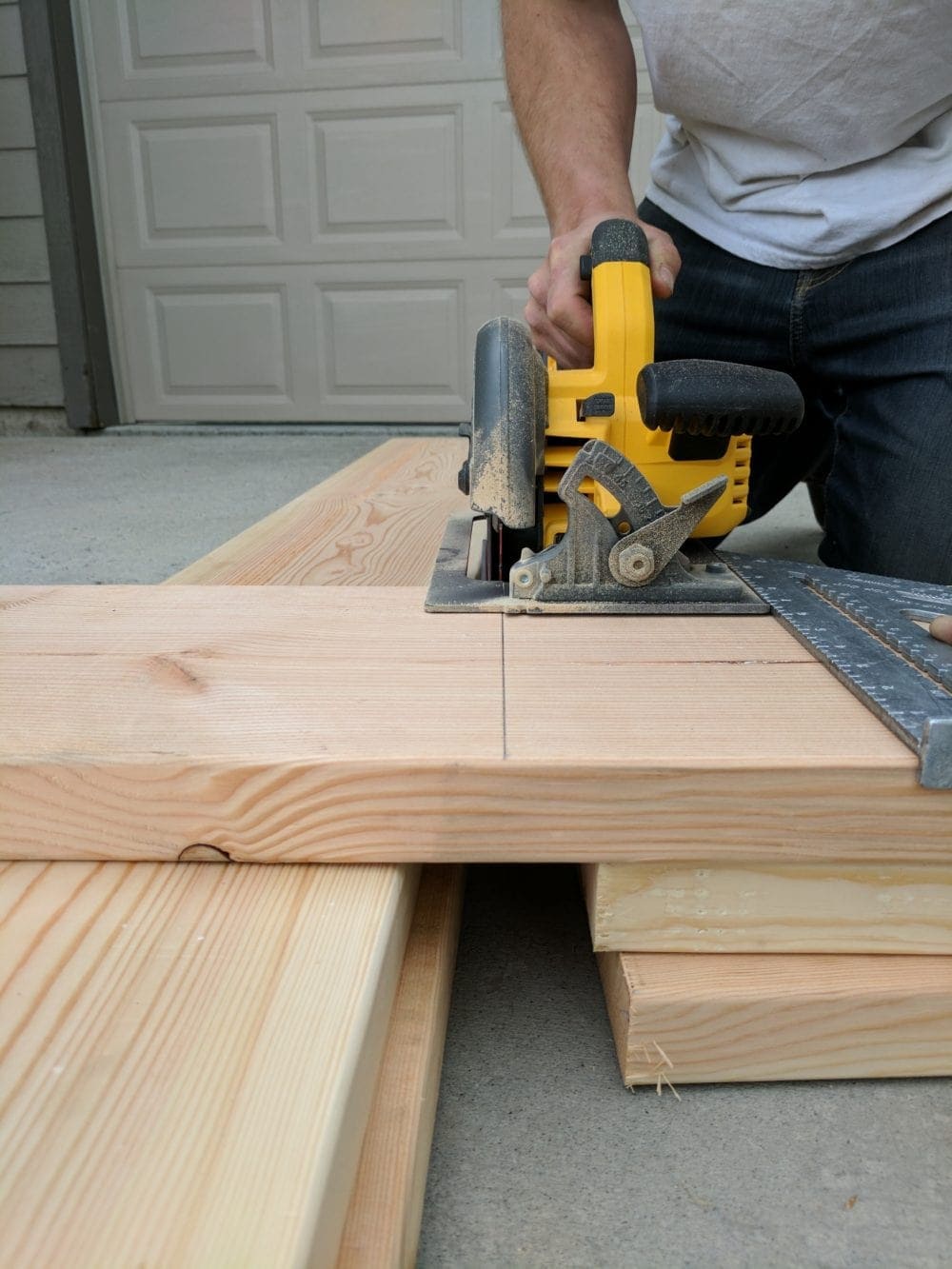
We constructed the wood frames on our driveway to make use of the clean, flat work surface. Having a nice work surface makes the project easier and quicker.
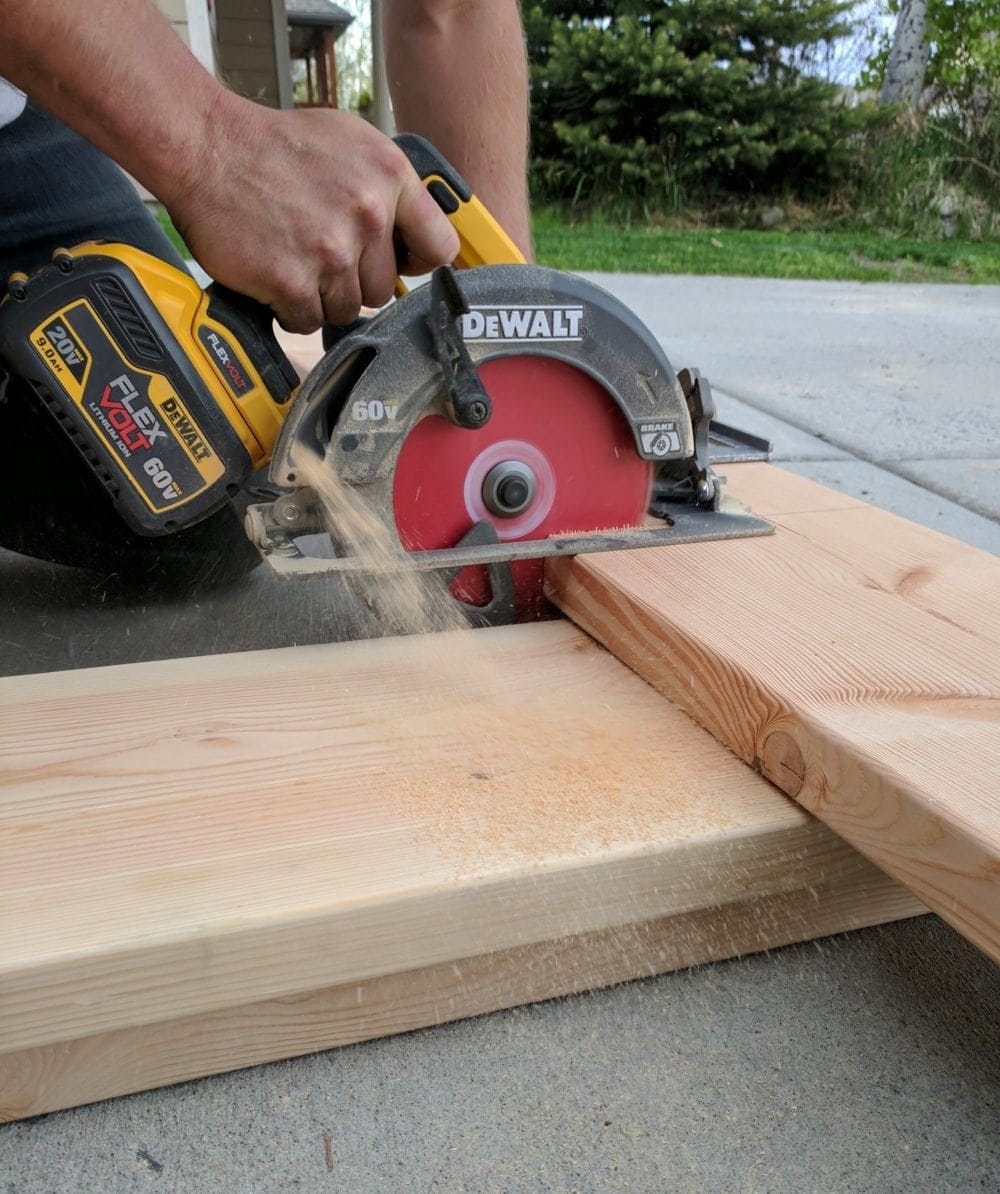
Step 3: Fasten Boards Together
Once the cuts were made, it was time to assemble the raised garden beds!
Using a Dewalt 20V Max Drill, we fastened the boards together by drilling three 3.5″ construction screws into each corner.
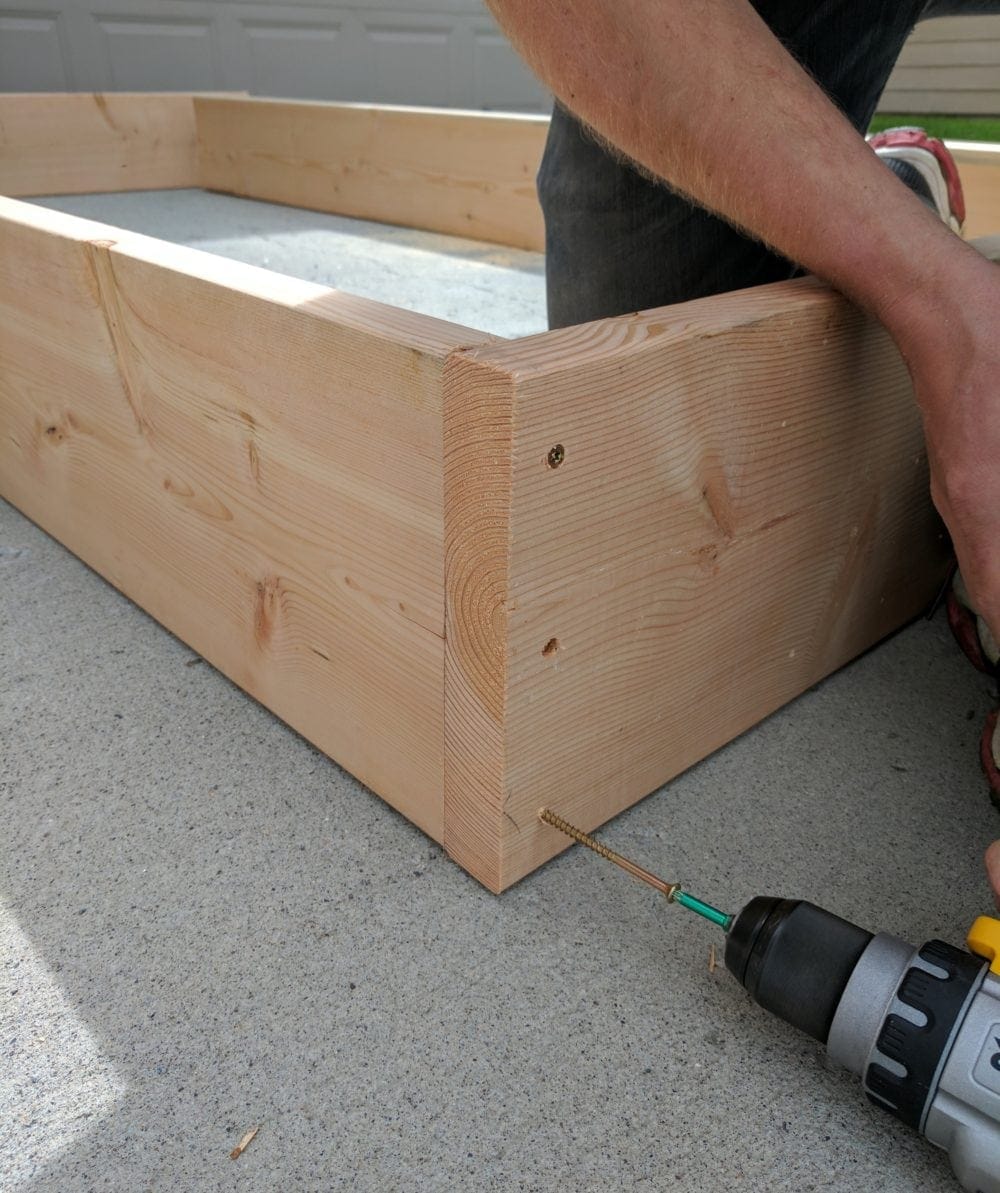
Long construction screws will hold the boards snugly together for the life of the raised garden bed.
You could also use nails to secure the frames together, but they have a tendency to start coming apart after a year or two. Also, sometimes warped boards will start pulling nails apart within a few days, so keep that in mind.
GET THE RIGHT TOOLS FOR THE JOB
Pssstttt…. If you love DIY home renovation projects, checkout my Must Have Tool Guide. It has 17+ tools that I think every DIYer should own!
Moving & Prepping the Garden Bed Frames
After the raised bed frames were finished, we moved them to their spot in the back yard. The assembled frames aren’t super heavy, but they are a little bit awkward to move.
Teamwork makes this step much easier.
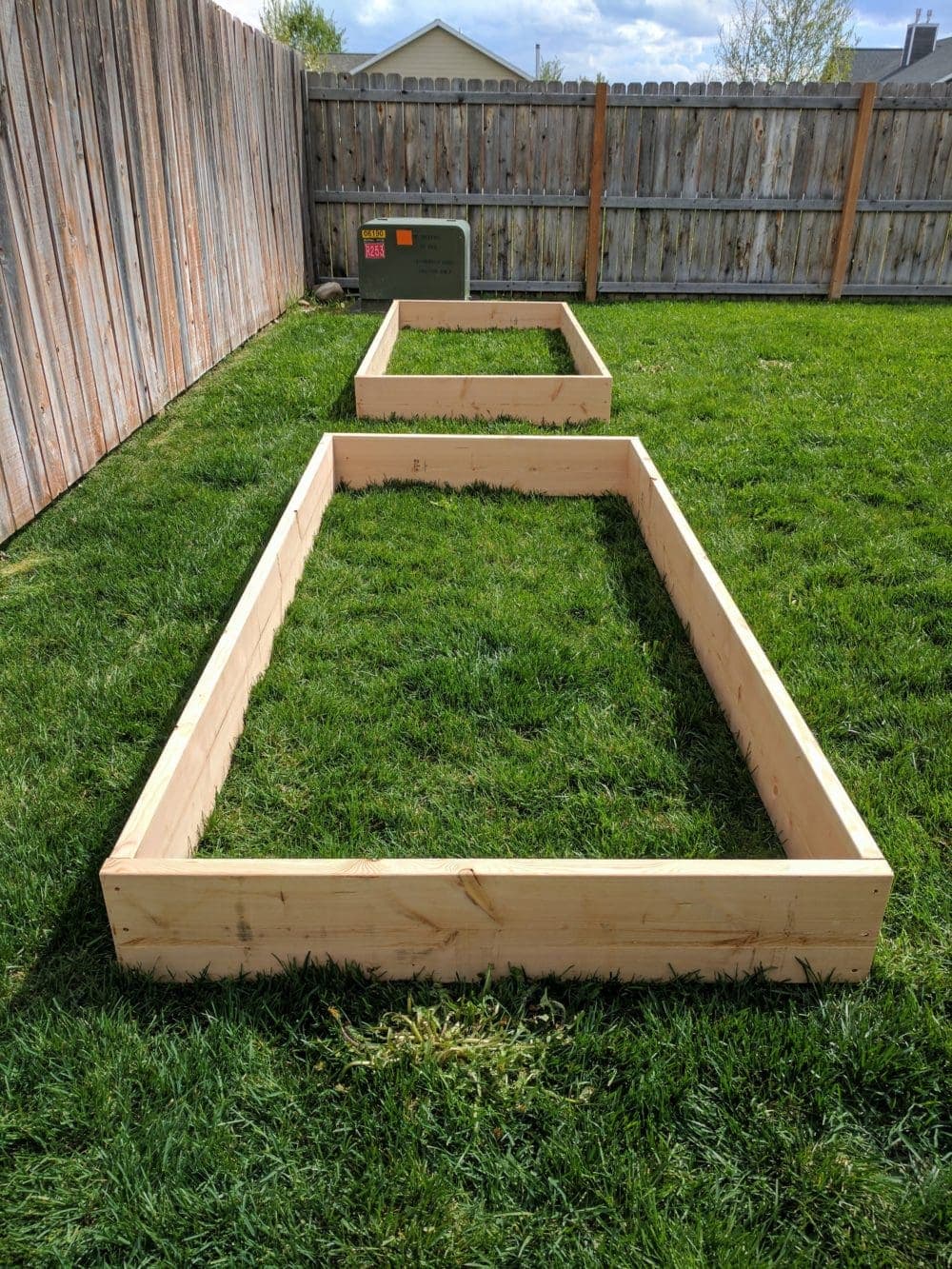
What should you put on the bottom of a raised garden bed?
To get our beds ready for soil, we used a DeWalt String Trimmer to cut the grass down as short as possible. There’s no need to remove grass and clippings – once buried, they just become compost/fertilizer.
Some gardeners recommend placing cardboard or landscape cloth at the bottom of the raised garden bed frames before filling with soil. This prevents existing grass and weeds from growing up through the soil.
In our experience, using an underlayment hasn’t been necessary. If you decide to use shorter frames that won’t hold as much soil, then it would probably be a good idea.
We recommend against using Roundup or any other harsh chemicals to kill the grass, especially if you’re planting fruits & vegetables in your raised garden beds
!
How deep should a raised garden bed be?
We’ve found that around 10 – 12″ deep is ideal for raised garden beds. Shallow beds can work, but you start losing out on some of the benefits of raised beds.
Garden beds deeper than 12″ don’t really provide additional benefits, but they are more difficult, and more costly to build. On the bright side, tall garden beds can be easier on your back (you don’t have to bend over as far).
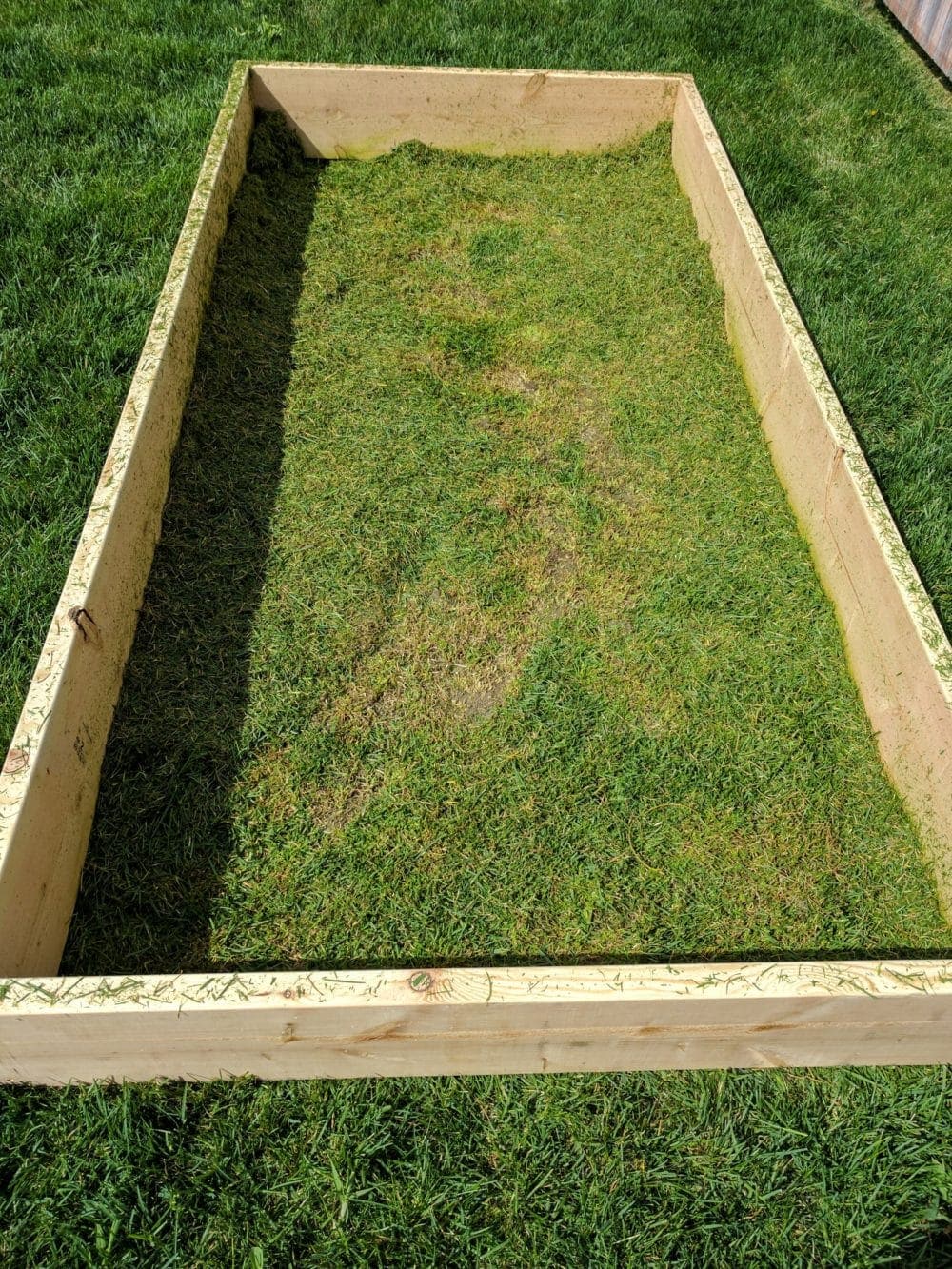
Pre-Made Garden Beds
If you’d rather purchase a pre-made, ready-to-assemble kit, check out my top picks for Best Raised Garden Beds. It includes popular designs with tons of options ranging from galvanized steel, to cedar, to rattan and many more.
They’re available in a range of sizes that will work with any garden space.
Here’s one of my favorite pre-made raised garden beds from the list. It’s available on Amazon with free Prime shipping, and only costs around $80!
Filling The Raised Garden Beds
We were able to get some free topsoil from a friend to fill our raised garden beds. You can usually buy inexpensive topsoil at a nursery, or garden supply store if you have a pickup truck to haul it.
It’s also pretty easy to buy bagged soil to fill the beds, but it does cost a little bit more.
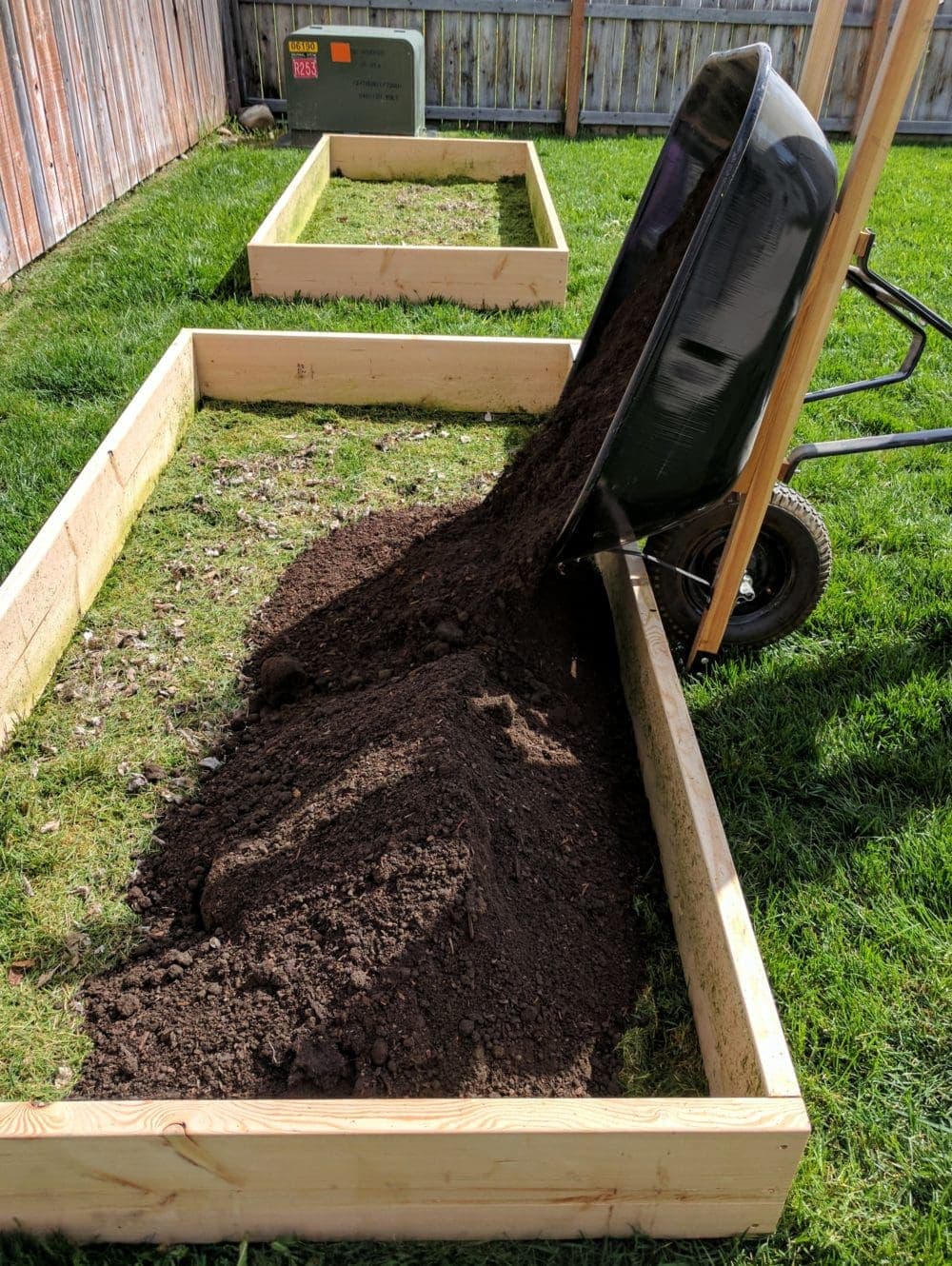
Update: After doing some gardening research on Better Homes and Gardens, we decided to try to improve the quality of our soil by adding bags of All-Purpose Garden Soil Plus Fertilizer. √
This mix is specially blended for soil in garden beds, and can continuously feed for up to 9 months. We added 4 bags to each raised bed and our garden is thriving!
How much soil does it take to fill a raised garden bed?
A 4ft x 8ft raised garden bed that is 10″ tall has a total volume of 24.22 cubic feet, or .9 cubic yards.
Most bags of soil are either 1.5 cu. ft. per bag, or 2 cu. ft in volume. To fill a 4ft x 8ft raised bed like we’ve built here, you’ll need seventeen 1.5 cu. ft bags of soil, or thirteen 2 cu. ft bags of soil.
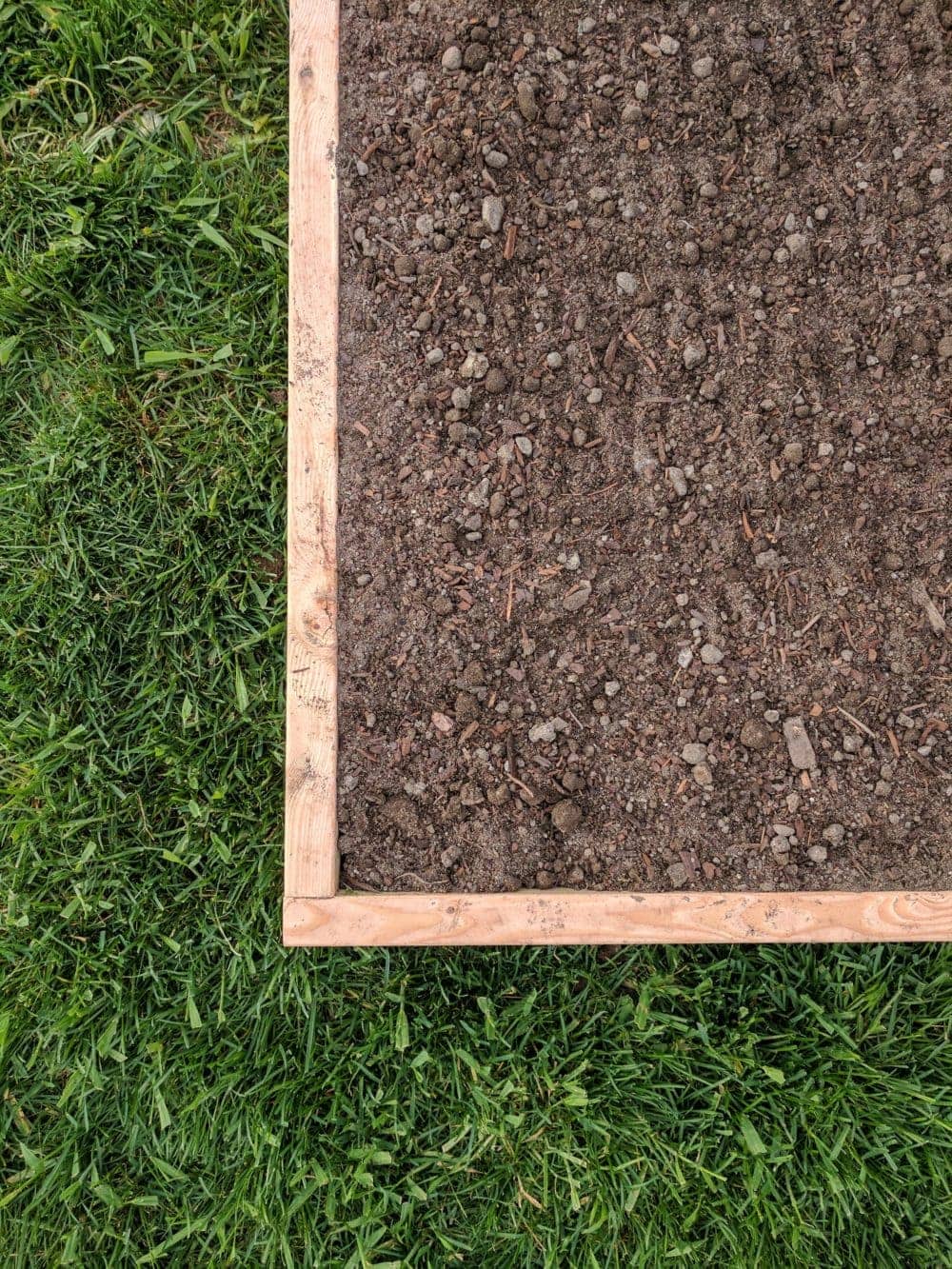
I’ve found that the soil in raised garden beds will settle over the first few months, especially when you start watering the garden.
To plan ahead for this settling, make sure to overfill the beds by a little bit. We’ve found that if you mound a few extra inches of soil over the top of the frames, it will end up settling down to flat over time. It’s difficult to add more soil later on because you’ll end up burying your plants!
Keep in mind, you shouldn’t try to compact the soil to prevent settling. Soft fluffy soil is perfect for young plants that are trying to grow roots.
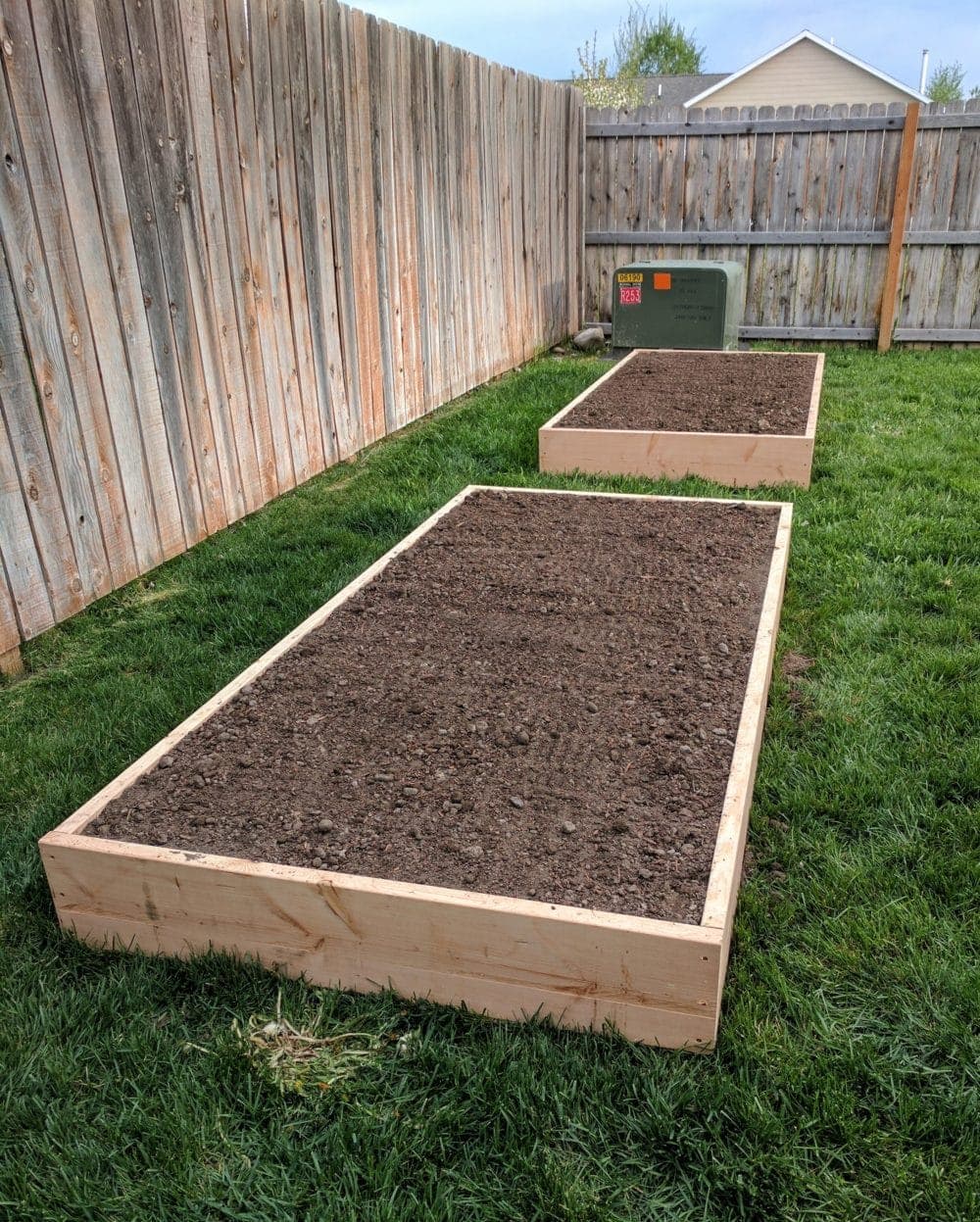
Going with a smaller size for your raised garden bed?
To fill a 4ft x 4ft raised garden bed, you’ll need 12.11 cubic feet or .45 cubic yards of soil. This equates to nine 1.5 cu. ft bags of soil, or seven 2 cu. ft bags of soil.
Note: Many bags of soil are either 1.5 or 2 cu. ft, however many other sizes are available. Be sure to calculate the number of bags based on the exact size of the bags you’re buying. And always round up so you can over fill the beds slightly!
Printable Garden Planner
Feeling overwhelmed trying to keep track of all your gardening details–when to plant what, which seeds need extra watering, and what was that fertilizer hack that worked so well last year?
My first few years of gardening, I didn’t keep track of anything because I really thought I’d remember – but nope! I forgot it all. This is exactly why I’ve created the Printable Garden Planner.
Planting The Garden
After you’ve built your raised garden beds, it’s time for the fun part – planting the crops!
In our garden, I planted all of our favorite vegetables, plus a few flowers and some lavender. Raised garden beds are perfect for almost any plant.
For an easy way to get started with your raised vegetable garden, check out this Set of 30 Vegetable & Herb Seeds. It has all the varieties you love, and they’re all Heirloom and 100% Non-GMO!
Here’s my top picks for vegetable seeds. They’re perfect for planting in raised garden beds.
- Black Beauty Zucchini Seeds (Amazon)
- Big Boy Hybrid Tomato Seeds (Amazon)
- Sugar Sweetie Cherry Tomato Seeds (Amazon)
- Giant Sweet Red Strawberry Seeds (Amazon)
- Purple Tomato Seeds (Amazon)
- Early Scarlet Globe Radish Seeds (Amazon)
- Sweet Potato Seeds (Amazon)
- Spacemaster Cucumber Seeds (Amazon)
- Early No. 7 Spinach Seeds (Amazon)
- Mammoth Sunflower Seeds (Amazon)
If you’re starting your plants from seed, this heated seed germination station can greatly increase the success of germination. Using this Ankace 40W LED Grow Light can also help a ton!
I used Popsicle sticks and my favorite embossed label maker to make easy DIY labels for my plants. If you don’t have any Popsicle sticks on hand, these bamboo markers would be cute too!
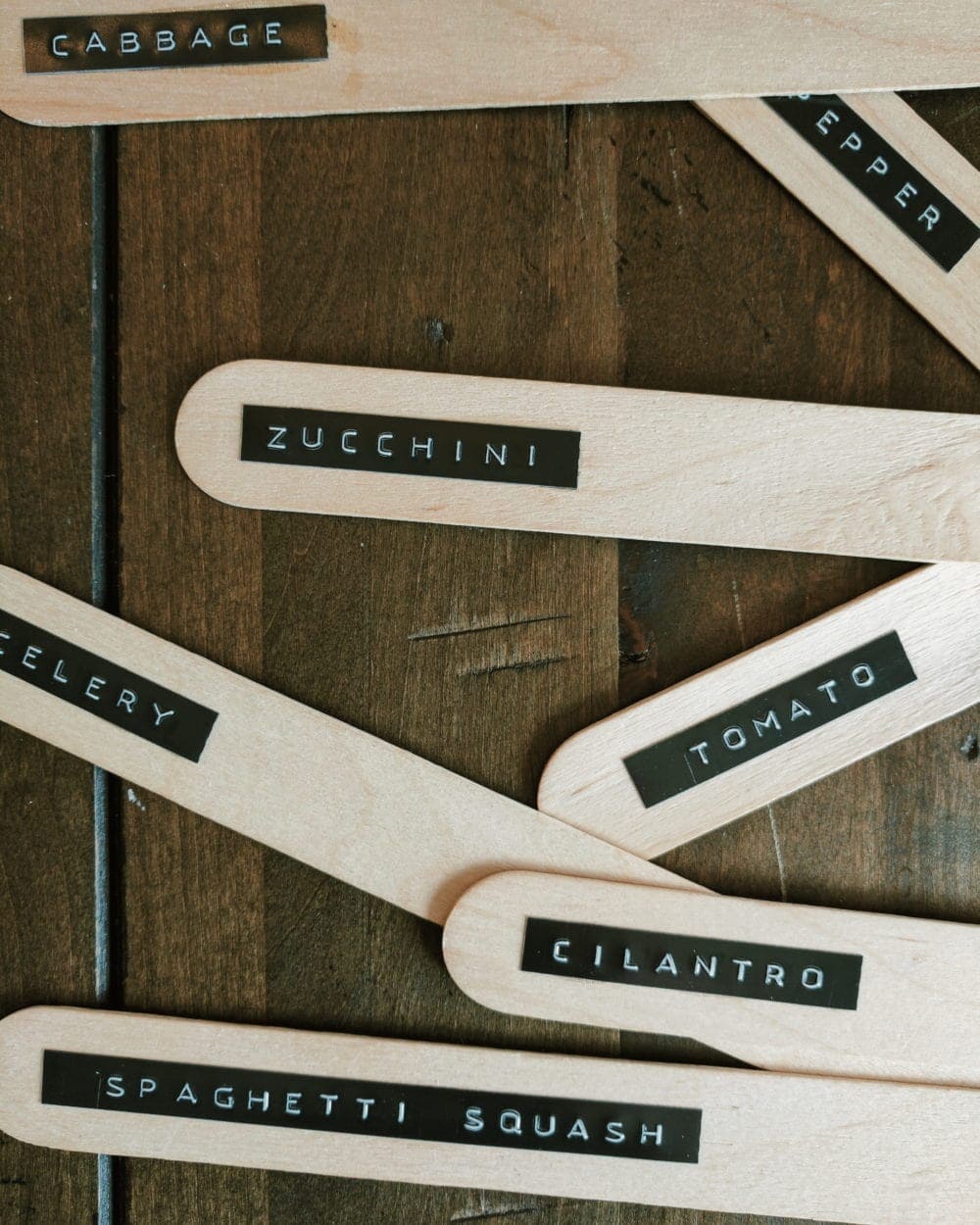
RELATED: Small Patio Makeover On A Budget!
Watering A Raised Garden Bed
You can water a raised garden bed by hand or with a sprinkler, but I recommend installing an automatic drip watering system!
This gardening hack is so convenient – it’s easy to install, and it’s way cheaper than you might think. Having the watering duties handled automatically takes the hassle out of gardening.
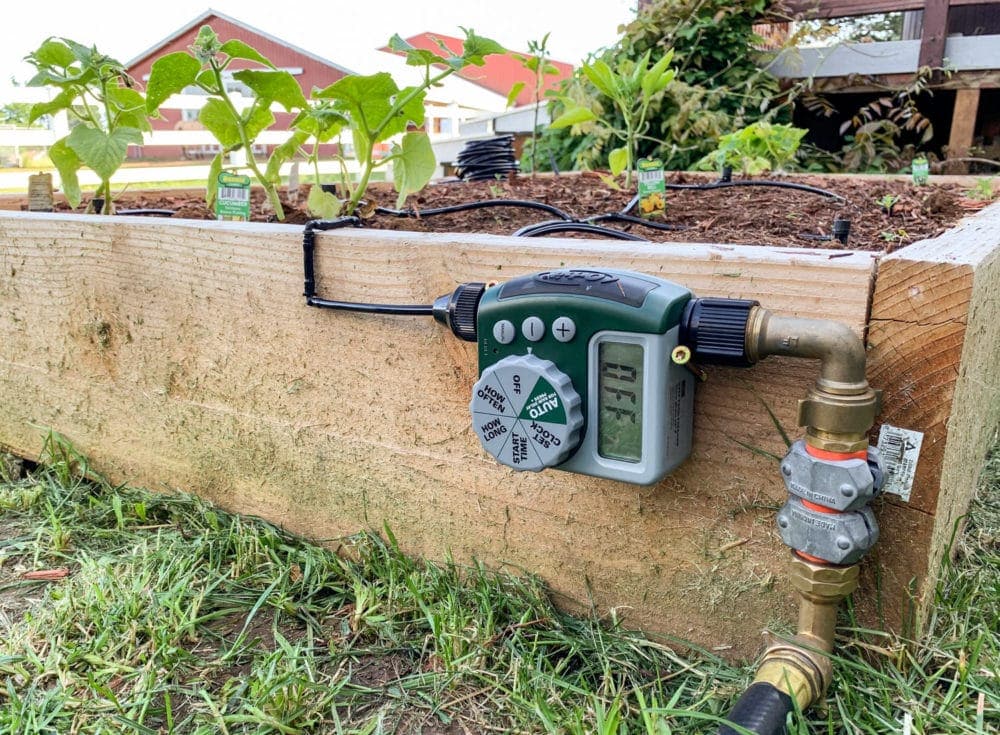
You can see the full tutorial on installing DIY Automatic Drip Watering. It has all the info you need to install your own drip irrigation system in a raised garden bed.
Don’t Forget The Plant Food!
For best results, feed your plants with Miracle-Gro All Purpose Plant Food (or your choice of plant food) every 1-2 weeks.
My Favorite Gardening Tools & Resources
You don’t need a ton of fancy tools to get into gardening, but there are a few necessities you’ll want to have on hand.
How To Keep Deer and Other Animals Out
If you live in a rural area, there’s a good chance that deer could eat your precious vegetables! This 7.5ft Garden Netting is the perfect solution.
It’s durable, easy to install, and keeps birds, deer and other animals out of your raised garden beds.
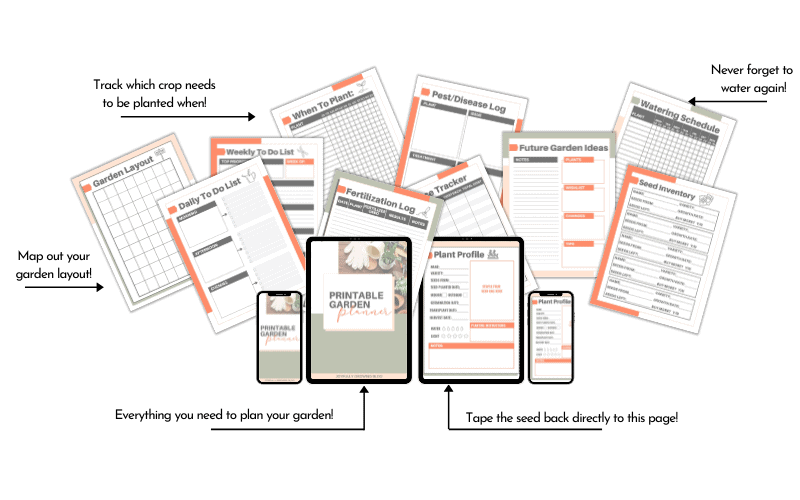
Printable Garden Planner
Everything you need to easily organize, schedule, and plan your garden—without having to start from scratch every year!
Want more ideas for your backyard?
- How to Style A Small Patio (on a budget!)
- DIY Outdoor Patio Table
- 9 Outdoor Rugs on Amazon That’ll Transform Your Outdoor Space



